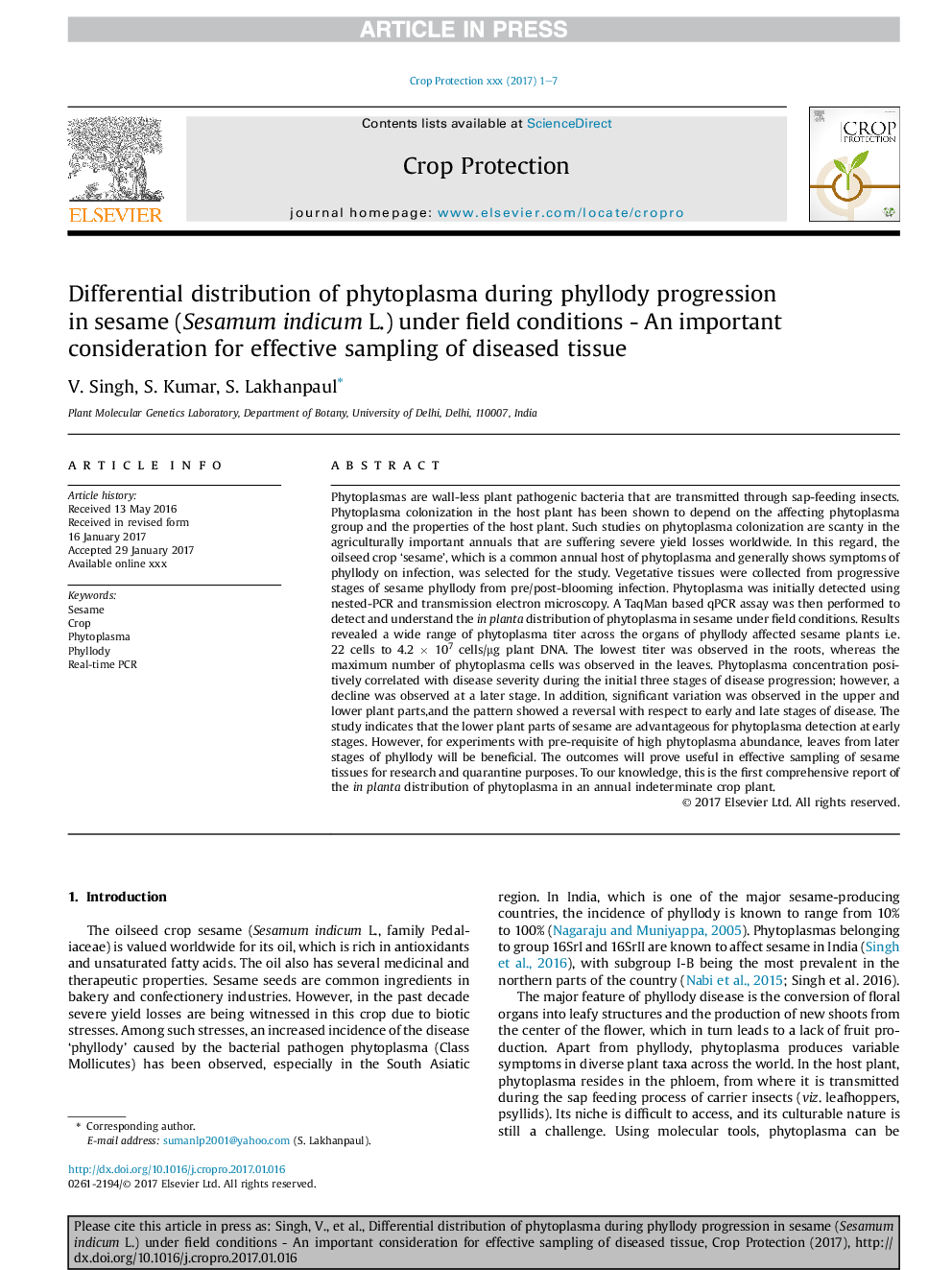| کد مقاله | کد نشریه | سال انتشار | مقاله انگلیسی | نسخه تمام متن |
|---|---|---|---|---|
| 8878123 | 1624277 | 2018 | 7 صفحه PDF | دانلود رایگان |
عنوان انگلیسی مقاله ISI
Differential distribution of phytoplasma during phyllody progression in sesame (Sesamum indicum L.) under field conditions - An important consideration for effective sampling of diseased tissue
دانلود مقاله + سفارش ترجمه
دانلود مقاله ISI انگلیسی
رایگان برای ایرانیان
موضوعات مرتبط
علوم زیستی و بیوفناوری
علوم کشاورزی و بیولوژیک
علوم زراعت و اصلاح نباتات
پیش نمایش صفحه اول مقاله

چکیده انگلیسی
Phytoplasmas are wall-less plant pathogenic bacteria that are transmitted through sap-feeding insects. Phytoplasma colonization in the host plant has been shown to depend on the affecting phytoplasma group and the properties of the host plant. Such studies on phytoplasma colonization are scanty in the agriculturally important annuals that are suffering severe yield losses worldwide. In this regard, the oilseed crop 'sesame', which is a common annual host of phytoplasma and generally shows symptoms of phyllody on infection, was selected for the study. Vegetative tissues were collected from progressive stages of sesame phyllody from pre/post-blooming infection. Phytoplasma was initially detected using nested-PCR and transmission electron microscopy. A TaqMan based qPCR assay was then performed to detect and understand the in planta distribution of phytoplasma in sesame under field conditions. Results revealed a wide range of phytoplasma titer across the organs of phyllody affected sesame plants i.e. 22 cells to 4.2 Ã 107 cells/μg plant DNA. The lowest titer was observed in the roots, whereas the maximum number of phytoplasma cells was observed in the leaves. Phytoplasma concentration positively correlated with disease severity during the initial three stages of disease progression; however, a decline was observed at a later stage. In addition, significant variation was observed in the upper and lower plant parts,and the pattern showed a reversal with respect to early and late stages of disease. The study indicates that the lower plant parts of sesame are advantageous for phytoplasma detection at early stages. However, for experiments with pre-requisite of high phytoplasma abundance, leaves from later stages of phyllody will be beneficial. The outcomes will prove useful in effective sampling of sesame tissues for research and quarantine purposes. To our knowledge, this is the first comprehensive report of the in planta distribution of phytoplasma in an annual indeterminate crop plant.
ناشر
Database: Elsevier - ScienceDirect (ساینس دایرکت)
Journal: Crop Protection - Volume 110, August 2018, Pages 288-294
Journal: Crop Protection - Volume 110, August 2018, Pages 288-294
نویسندگان
V. Singh, S. Kumar, S. Lakhanpaul,